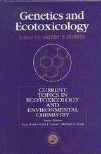Papers in the Biological Sciences

Valery Forbes Publications
Document Type
Article
Date of this Version
2007
Abstract
The toxicity of nonylphenol (NP) to springtails was pronounced at 40 mg/kg dry weight soil, at which no animals survived. Body length and fecundity were the individual life-history traits significantly stimulated by sublethal concentrations of NP during a 64-day experiment. However, the effects of NP on these traits did not result in a statistically significant increase in population growth rate (λ). Decomposition analysis indicated that fecundity was the main contributor to the (non-significant) changes observed in λ. However, since the elasticity of fecundity was very low, large changes in fecundity resulted in a minimal effect on λ. Juvenile survival had the highest elasticity of all traits, but was not affected by NP, and therefore did not contribute to effects on λ. This study confirms previous studies showing that effects of chemicals on individual life-history traits are attenuated at the population level and that λ is an appropriate endpoint for ecotoxicological studies.


Comments
Published in Ecotoxicology and Environmental Safety 67 (2007), pp. 369-377; DOI: 10.1016/j.ecoenv.2006.11.005 Copyright © 2007 Elsevier Inc. Used by permission.